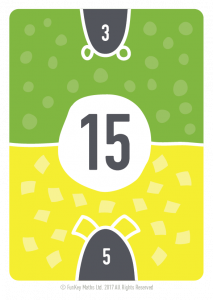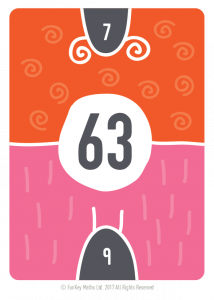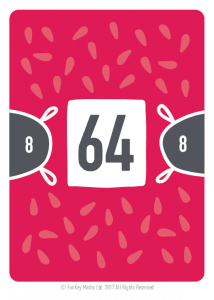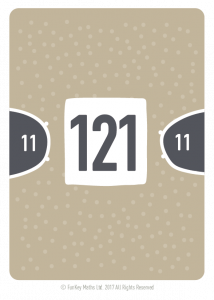The colour coding on the FunKey Times Tables cards can really help some children remember their times table facts. Children who notice the colours and start to associate colours with particular times tables have an extra way of remembering times tables facts.
Some children latch on to the colours of their own accord. I once worked with a Year 4 child who was dyscalculic. Before she had started using the cards she couldn’t remember more than a handful of multiplication facts and could not create any related division facts.

“Limes and lemons!”
Each week I gave her three new FunKey Times Tables cards to study. When I asked her to tell me about card 15, she responded with a confident: “Limes and lemons!” I asked her to tell me more. She said: “Well limes are green and green is three, and lemons are yellow and yellow is 5, so 3 fives are 15, five threes are 15, and 15 divided by 5 is three and 15 divided by 3 is five.” For her, the colours were transformational.
On the other hand, some children barely notice the colours until you draw attention to them. I have found that it is well worth drawing children’s attention to the colours as the visual recollection of a card can help secure multiplication facts in a very different but complimentary way. I make time to discuss the look of the cards with children.

“Do the colours on card 63 clash?”

“Does card 64 remind you of a strawberry?”

“Who likes card 121? What shall we call that colour?”
To help children to remember colours and which times table they represent, we have created two new games
Click on the links to read the rules. They are quick and easy to play, and do not need any times table knowledge. They are a great introduction to the cards at any age and will definitely help children remember which colour relates to which times table. Have fun!
